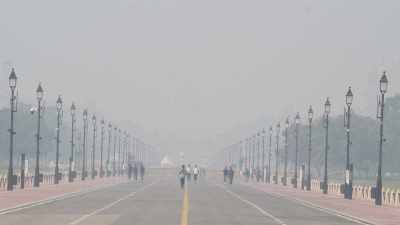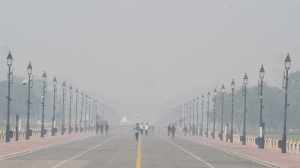Flying for business formation
Even two years ago India was not exactly attractive to most international airline operators. It was a destination, but nothing more. Today,...

Even two years ago India was not exactly attractive to most international airline operators. It was a destination, but nothing more. Today, with over 40 operators flying to and carrying passengers out of India, just being here has turned profitable for most of them.
That would perhaps explain the clamour of international carriers to increase flights out of India. Last few weeks has seen a number of foreign airlines like British Airways, Lufthansa, Emirates, KLM-NorthWest and Austrian Airways seeking to strengthen their business in India. Most foreign airlines are in negotiations with the Indian government for permission to increase the number of flights out of the country and that too from the southern cities that were not on the international aviation maps for a long time after Mumbai and Delhi became recognised routes.
Most major airline operators have a flight out of Delhi and Mumbai almost daily. But they want more. The reasons – the immense growth of business travel out of the country and the struggling Air-India, which in the face of severe financial crunch, is unable to face the demand for more capacity and more destinations.
The carriers estimate a general 12-14 per cent growth in the Indian market in terms of the passenger volumes out of the country. The largest growth, the operators say, has come in the traffic that flows beyond their home countries to other destinations – mainly in Europe and North America.
“Over 30 per cent of out traffic out of India travels to North America, another 30 per cent to other parts of Europe. The remaining is shared between Frankfurt – Lufthansa’s destination country – and other parts of the world,” says Kavin Sethi of Lufthansa.
Lufthansa, which started with 10 flights out of India in 1994, today flies 15 out of here. And the German carrier now wants increase the number to 21 by the year 2000, including seven flights out of Chennai, the new destination for international carriers.
With Air-India struggling to add capacity, the market is almost entirely open to the international players to grab. The Indian carrier has in many cases been unable to hold on to even its existing routes. In the last year and a half, Air-India has stopped flying to Johannesburg, Durban, Perth, Amsterdam and Zurich and most recently, to Toronto.
On these routes, the biggest gainers have been the KLM-NorthWest combine and Air France. Air-India officials, however, claim that its code sharing arrangements with other international carriers, will mitigate the damage, but the fact remains that as a brandname it will have no presence on international routes.
Over 60 per cent of the traffic out of Indian destinations is business traffic while the remaining comprises what in aviation parlance is called `visiting friends and relatives’ (ViFR) traffic. Lufthansa flew 4.2 lakh passengers out of India in 1996-97 while British Airways flew over 3 lakh passengers on its India-London routes. And both with load factors of over 90 per cet through the year.
“We have had to turn away some due to the non-availability of seats,” says Kevin Steele of British Airways. The airline, which now flies 16 flights out of India – Mumbai, Delhi and Calcutta – has been negotiating for an increase the number. Two round of negotiations have been held but without a decision. The airline, which had already planned two additional flights for the winter schedule this year has had to put it off.
The growth of over 12 per cent is expected sustain in the coming years and the airline proposes to increase the number of flights out of India to 22 in the next two years and to 32 by the year 2000.
Traffic on the India-London route is expected to increase by about 10 per cent out of India and by about 11 per cent into India this year and British Airways wants to be ready for that.
Air-India is competition, British Airways maintains, but against BA’s 16 flights from India, Air-India has seven on the London-New York route and three on the London-Chicago route. Air-India’s Frankfurt flights are down from eight to just two since February this year.
“India accounts for two per cent of the revenues of the KLM-North West combine on he India-Amsterdam-North America route, and is still growing,” says Seema Malhotra of KLM-North West.
The airlines have introduced double daily service to and from India. Northwest brings its flights to Mumbai and Delhi with connections to the US through Amsterdam while KLM provides connections through 7 weekly flights out of Mumbai, Delhi and Calcutta. The airlines now are keen on a flight out of Bangalore which is a potential growth are in terms of traffic to the US.
The company has based it projections on a growth rate of 5-7 per cent in the Indian air travel market. The Indian flier will, of course, have few complaints. Airlines have also modified their capacity structure, and therefore, the fare structure to suit the Indian traveller.
“But if are being lowered to attract more passengers, it is also the duty of the airline to accomodate them. That means we need to offer more flights and more seats,” says Raj K. Babbar of Emirates Airways.
Emirates which offered 5150 seats in 1996-97 is seeking permission to add 700 seats on its India flights. Last year the Gulf-bound airline recorded a load factor of 93 per cent, says Babbar.
Even new entrants to the market, who do not expect too much traffic to the home country have begun negotiating for the freedom to pick up passengers, cargo and mail in a second nation en route to a third, with the flight beginning and ending in the home country.
British Airways, for instance, has the right to carry passengers from Dhaka on its India flights before touching London.
The most recent entrant to the market has been Austrian Airways which commissioned its inaugural flight on October 26 this year has already begun negotiating with the government for more flights. It is now permitted to fly two flights a week from Delhi and Mumbai.
Making the announcement airline officials said the traffic from India to Vienna in previous year’s had averaged at about 29,000 a year. But out of India, the airline made its intentions plain – the focus was not on Vienna bound travellers, but Europe bound ones.
The government has before it requests for more from almost all airlines operating here – United Airlines, Air France despite its arrangement with Air-India, Singapore Airlines.
The authorities have been unable to grant any more flights to international airlines while still waiting for the new aviation policy to outline the open skies vision for the country.
The growing market is about equally divided among the different players, but Air-India’s constraints could well force the advantage away from the carrier to its competitors in the next couple of years.





- 01
- 02
- 03
- 04
- 05


























